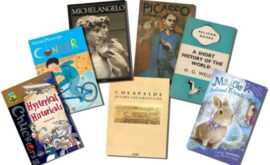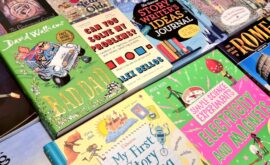How Second-Hand Books Reflect Changing Literary Trends
Second-hand books hold a unique charm, offering more than just stories within their pages.
They provide a glimpse into the reading habits, cultural shifts, and literary trends of different eras. From dog-eared classics to forgotten gems, the second-hand book market acts as a living archive of what readers once cherished and, in some cases, discarded.
In this article, we’ll explore how second-hand books reflect changing literary trends, examining what they reveal about societal tastes, publishing practices, and the enduring appeal of certain genres and authors.
The Rise and Fall of Genres
One of the most fascinating aspects of second-hand bookshops is the abundance of certain genres that dominated particular periods.
For example, the mid-20th century saw an explosion of science fiction and detective novels. Bookshop shelves still brim with yellowing copies of classic Agatha Christie mysteries and pulp science fiction anthologies from the 1950s and 60s.
Their continued presence highlights the enduring popularity of these genres but also reveals how they’ve evolved.
Take romance novels as another case in point. Mills & Boon, a UK publishing staple, has filled second-hand shops for decades.
The presence of these books in charity shops and second-hand stores speaks to their widespread readership in the 20th century and their relatively disposable nature.
Contemporary romance has since diversified, with more inclusive storylines and varied settings, showing how literary tastes and societal values evolve hand-in-hand.
Bestsellers of Bygone Eras
Browsing through a second-hand bookshop often feels like a journey through literary time. Bestsellers from previous decades, such as the works of James Clavell, Jacqueline Susann, or Harold Robbins, now gather dust on shelves, reflecting changing tastes in popular fiction.
What was once a cultural phenomenon may now be overlooked or forgotten by today’s readers.
However, some bestsellers endure. Jane Austen, the Brontë sisters, and Charles Dickens still claim prominent spots in second-hand bookshops, suggesting a timeless appeal. Their continued presence reflects how certain authors manage to transcend the constraints of their time, appealing to successive generations.
The Influence of Historical Context
Books are a product of their time, and their themes often mirror the societal and political issues of their era. Second-hand bookshelves often feature works that were revolutionary or highly relevant at their time of publication.
For instance, novels addressing the Cold War, feminism, or civil rights movements appear frequently in second-hand collections, underscoring their cultural significance.
Consider George Orwell’s 1984 or Margaret Atwood’s The Handmaid’s Tale. These books have experienced waves of renewed popularity, often tied to political climates and societal concerns.
Finding older editions of such books in second-hand shops highlights how their relevance fluctuates with historical and cultural shifts.
The Endurance of Children’s Classics
Second-hand bookshops are treasure troves for children’s literature, with worn copies of The Wind in the Willows, Peter Pan, and Enid Blyton’s adventures frequently on offer.
These books reveal what past generations grew up reading and what they passed down to their children.
Interestingly, the prevalence of certain titles can also indicate shifts in educational values and parental preferences.
For example, the resurgence of interest in illustrated classics and collector’s editions for children speaks to the desire for more engaging, visually appealing books for younger readers today.
Forgotten Authors and Trends
Not all authors enjoy enduring fame. The second-hand market is replete with works by writers who were once prolific but are now largely forgotten. This trend reveals the transient nature of literary fame and the ever-changing preferences of readers.
For example, the works of 19th-century sensation novelists like Mary Elizabeth Braddon and Wilkie Collins were immensely popular in their time but are less familiar to modern audiences.
Their books, when found in second-hand stores, offer a window into the fleeting nature of trends in literature.
Cover Art and Publishing Styles
Second-hand books also showcase the evolution of cover art and publishing styles. Browsing older books reveals trends in typography, illustration, and design. Covers from the 1960s often feature bold colours and abstract designs, while books from the 1980s might showcase photographic realism or airbrushed imagery.
These changes in design reflect broader shifts in marketing and consumer preferences.
Today, minimalist and Instagram-friendly designs dominate, with many publishers re-releasing older books with contemporary covers to appeal to modern readers.
The Role of Second-Hand Books in Preserving Marginalised Voices
Second-hand books also help preserve voices that might otherwise be lost to time. Books by marginalised authors or those from small, independent presses often find their way into second-hand shops, offering readers a chance to discover hidden gems. This aspect highlights the role of second-hand books in expanding the literary canon and giving overlooked voices a second life.
The resurgence of interest in books by authors like Zora Neale Hurston or rediscovered works like The Colour Purple by Alice Walker shows how the second-hand market can contribute to renewed appreciation for important but once-overlooked literature.
Environmental and Economic Considerations
The popularity of second-hand books reflects not only literary trends but also growing concerns about sustainability. As readers become more environmentally conscious, buying pre-loved books aligns with efforts to reduce waste and promote recycling.
Economically, second-hand books offer an affordable way for readers to access a wide range of literature. This accessibility ensures that even older, out-of-print books remain available to readers, contributing to the preservation of literary history.
Personal Annotations and Marginalia
One of the joys of buying second-hand books is discovering personal notes, dedications, or annotations left by previous owners.
These glimpses into another reader’s thoughts can be fascinating, offering an intimate connection to the book’s history and reflecting its impact on individual readers over time.
Marginalia can also reveal changing interpretations of a text. For instance, a second-hand copy of a classic novel might contain notes reflecting the educational or cultural context in which it was read, providing insight into how its themes were understood in the past.
Trends in Non-Fiction
Second-hand shops aren’t just for fiction lovers; they’re also a haven for non-fiction readers. From outdated encyclopaedias to self-help books from the 1980s, these titles reveal past interests and societal concerns. Books on topics like health, technology, or travel can highlight how knowledge and priorities have shifted over time.
For example, older self-help books often reflect traditional gender roles and cultural norms, while contemporary titles focus on mindfulness, inclusivity, and personal growth. Similarly, travel guides from decades past offer a snapshot of how destinations were marketed and perceived.
The Role of Second-Hand Bookshops in Literary Culture
Second-hand bookshops play an essential role in literary culture, acting as custodians of forgotten works and underappreciated genres. They offer a space for serendipitous discovery, where readers can stumble upon books they never knew they wanted.
These shops also serve as community hubs, fostering a love for literature and encouraging the sharing of stories. By supporting second-hand bookshops, readers contribute to the preservation of literary heritage and the promotion of a sustainable reading culture.
Key Takeaway.
Second-hand books are more than just pre-loved pages; they’re cultural artefacts that reflect changing literary trends and societal values.
From the rise and fall of genres to the evolution of cover art and the preservation of marginalised voices, they offer a fascinating glimpse into the past while remaining relevant in the present.
Whether you’re a collector, an avid reader, or simply someone who enjoys a good bargain, second-hand books invite you to explore the shifting landscapes of literature and discover the stories behind the stories.
So next time you visit a second-hand bookshop, take a moment to appreciate the history and trends captured within its shelves—you never know what treasures you might uncover.




